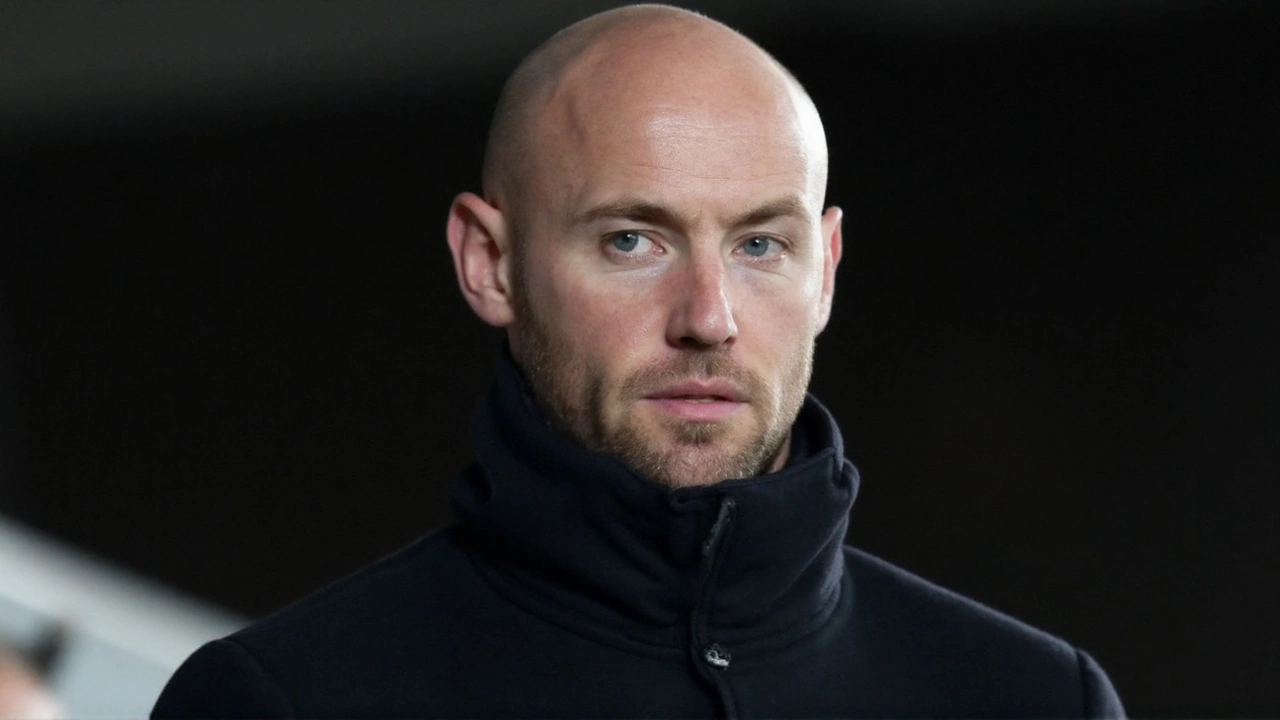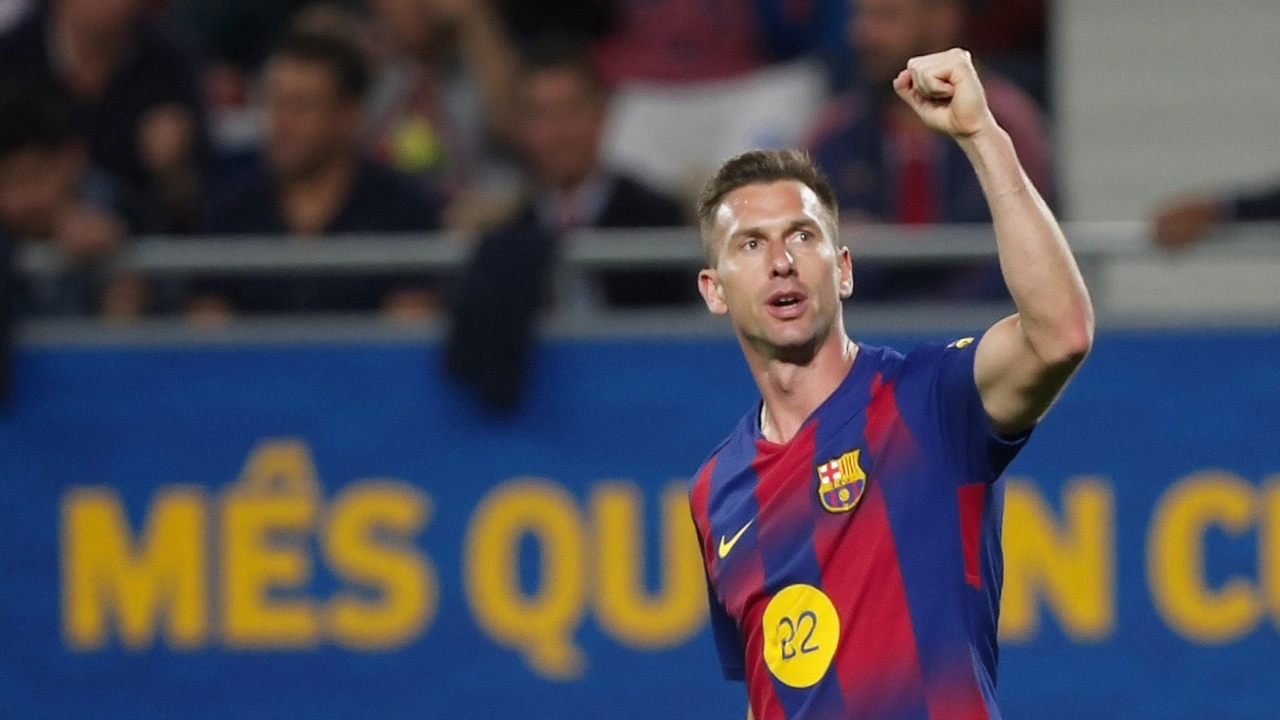Six-goal statement at Estadi Johan Cruyff
Barcelona didn’t just get back to winning—they made a loud point about where this team is headed. A 6-0 dismantling of Valencia at the Estadi Johan Cruyff delivered three separate braces from Fermín López, Raphinha, and Robert Lewandowski, and it felt every bit as dominant as the scoreline suggests. The clean sheet, the movement, the hunger—this wasn’t a grind. It was a showcase.
The theme of the night was clarity. Barcelona looked like a side with a clear plan and the confidence to execute it. The front line stretched the pitch, the midfield pushed through the gaps, and the back line kept Valencia penned in. No panic, no waste—just quick, simple decisions and a relentless tempo. It keeps Barcelona’s unbeaten league start intact and, more importantly, it shows the system is starting to breathe on its own.
Fermín López was the spark. His two goals bookended a performance full of intelligence: quick checks over the shoulder, tidy first touches, and third-man runs that Valencia simply didn’t track. He played like a midfielder who knows when to slow things down and when to drive at space. The goals will get the headlines, but his timing and work rate turned good phases into dangerous ones.
Raphinha gave Flick exactly what he wants from a winger: honest width and directness. He held the touchline to stretch Valencia’s shape, then cut in decisively when the moment opened. His finishing was clean and his decision-making sharp. Barcelona often stall when they get narrow; Raphinha’s positioning prevented that, keeping passing lanes open and dragging markers where they didn’t want to go.
Then there’s Lewandowski, who doesn’t need many touches to change a match. Two composed finishes, two examples of top-class movement. He peeled off shoulders, dropped in when needed, and stayed patient in the box. Even as the scoreline ballooned, he kept higher standards: crisp layoffs, snappy pressing cues, and the little nudges that give teammates space.
What made the scoreline possible was the collective sync. The midfield recycled possession quickly instead of dwelling on the ball, the full-backs chose their moments to advance, and the press reset instantly after turnovers. Valencia tried to play through, then tried to go long, and neither plan bought them breathing room.

What Flick’s blueprint looks like—and why it worked
You could see Hansi Flick’s fingerprints all over this. The structure felt lean: a front three that stayed high and wide, interiors willing to punch runs beyond the forward, and a back unit set to kill counters early. Barcelona didn’t pass for the sake of passing; they passed with purpose, to move Valencia’s lines and attack the gaps that opened.
The press was coordinated rather than frantic. The first trigger—usually a poor Valencia touch or a pass into a sideline—brought two or three bodies swarming, while the rest defense behind them was compact. That meant counterattacks fizzled fast. When Barcelona lost the ball, they regained it in seconds, often within 30 meters of goal. That’s exhausting to play against.
Width changed the match. By pinning Valencia’s full-backs deep, Barcelona’s interiors found room to receive facing forward. From there, one-touch combinations did the damage. You could see it build: a switch of play, a quick wall pass, and a runner attacking the channels. At times Valencia were stretched almost touchline to touchline, and when that happens, good teams smell blood.
Flick also got balance right between risk and control. Barcelona attacked aggressively but with cover. When a full-back pushed up, a midfielder slid across. When a winger cut inside, the opposite side stayed wide to hold shape. That simple discipline kept the tempo high without leaving the back door open.
It’s not just tactics, either. The body language mattered. Players celebrated recoveries and simple interventions, not just goals. You saw forwards chasing back, midfielders pointing and talking, defenders stepping in confidently. That’s the sort of collective buy-in that turns a good plan into muscle memory.
For Valencia, it was a long night. They struggled to stop Barcelona’s runners from midfield and couldn’t find a way out of their own half once the press settled in. When they tried to force play through the middle, they got crowded. When they went wide, they were isolated. And when they went long, they just handed the ball back. They’ll look at their spacing between lines—and the lack of pressure on the ball—as the core problems to fix.
What does this win actually tell us? A few things:
- Barcelona’s front three has balance again: a pure nine, a direct winger, and an interior who can arrive in scoring zones.
- Fermín López isn’t just promising—he’s changing games with his movement and end product.
- The press is structured, not improvised, and it’s producing chances as well as security.
- There’s a clear identity forming under Flick: vertical, quick, and ruthless when the moment is right.
There’s still perspective to keep. Not every match will offer this much space or flow this easily. Opponents will sit deeper, take fewer risks, and make Barcelona solve slower, trickier puzzles. But a performance like this helps in two ways: it builds belief in the system, and it raises the standard for what “good” should look like.
It also clarifies roles. Raphinha’s width looks non-negotiable when he’s this sharp, Lewandowski’s timing gives structure to the box, and Fermín’s runs force defenses to pick a poison. Behind them, the balance between energy and control in midfield will define how sustainable this is over a long season.
The biggest takeaway is the sense of rhythm. Barcelona looked comfortable playing fast without losing their heads, a trait they’ve been searching for through different managers and iterations. That’s a hard blend to find. If they keep this level of intent and spacing, the unbeaten run won’t be a footnote—it’ll be a trend.

